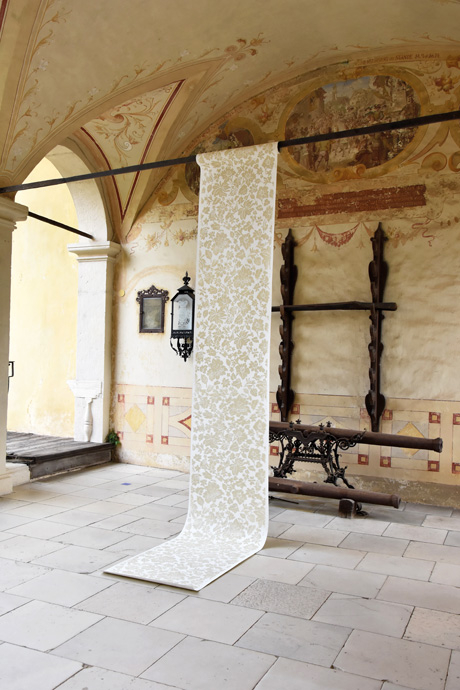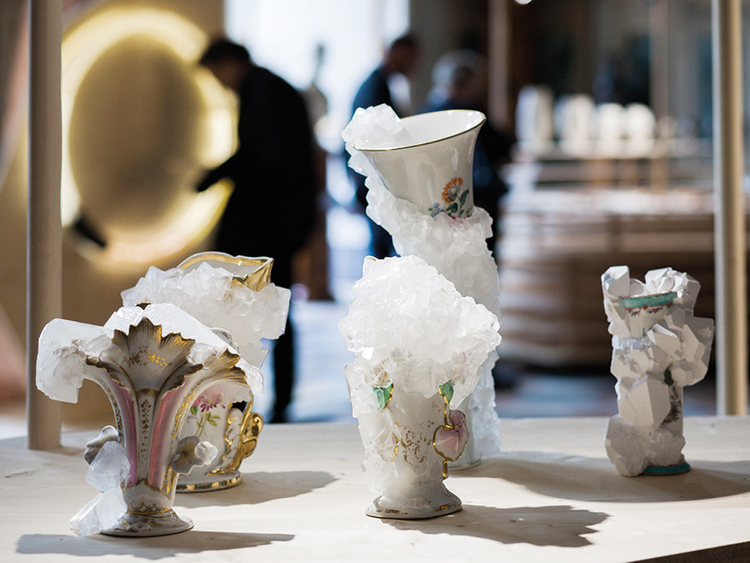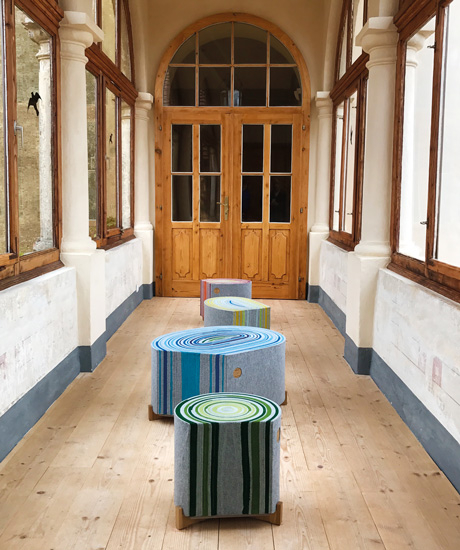Schloss Hollenegg for Design is a non-profit organisation founded by Alice Stori Liechtenstein, the Lady of Hollenegg Castle. The architectural marvel that boasts of a 16th century Renaissance courtyard modelled on the Landhaus in Graz (probably designed by the same architect, Domenico dell’Aglio), a Baroque church and sumptuously detailed, meticulously preserved, larger-than-life Trompe-l’oeil’s has been property of the Liechtenstein Family since 1821.
THE CASTLE TRANSFORMS
“Three years ago when my family relocated to the Castle, I immediately realised that there was an enormous potential,” says Liechtenstein of the extraordinary collection of artefacts that desperately needed an audience appreciative of their patrimony and the highest levels of craft that the works exemplified. While the church is still used by the local community, most had never set foot inside the Castle. “I felt it would be amazing to open the place to the public once a year, celebrate the old with the new, and provide a point of reference, inspiration even, to a new generation of designers.” As a result, Schloss Hollenegg for Design’s manifesto centres on supporting emerging designers under 35, with the aim of creating space for design research, thinking and critique. Offering the only residency program in Austria specifically aimed at designers, the programme also organises exhibitions, workshops and symposia.
CYRIL’S CHOICE
After last year’s critically acclaimed exhibit, Slow, Hollenegg Castle opened its doors to the public for the second time last week. Curated by Liechtenstein, the show titled Morphosis explored concepts of transformation and adaptation; unknowingly to its mastermind, the fair’s theme become a metaphor for the changing role of the mighty castle within the global creative class. Dubai-based design consultant at large, Cryil Zammit was there. Here he presents his favourite works from Morphosis.
CRYSTALLISATION VASES
Liechtenstein invited the German designer Lukas Wegwerth to lend new life to worn and old-fashioned vases she had found stored away in the Castle. Wegwerth’s experimentation with crystal that joins cracks as it grows meant a new aesthetic and the antiques journeyed from destruction to reconstruction.
TEKTITES
Inspired by ceramic foams, Studio Furthermore (UK) developed its own craft using Parian, the ultra-fine and impurity free variant of bisque porcelain. Infusing their works with terracotta and a deep blue hue, the studio delivered contemporary works that were warm and demonstrated an incredible lightness of being.
OFFSETS
Inspired by farming traditions of preserving parts of the crop for planting in the next season, mischer’traxler (Austria) created one of a kind pieces from layers of felt fabric, slowly rolled in tree-trunk shapes. Once fully formed, these trunks were cut off in sections and the inner core was revealed as a new object. Nature’s irregularities as found on trees and plants inform the overall aesthetic of the collection.
DEAD END
Glass, when hot, can be freely shaped. When it is blown, glass expands. The Italian designer Lucia Massari investigated what occurs when the expansion process of the glass is obstructed by a cage before the material hardens. Dead End features hand blown glass from Murano.
LIGHT BLUE
During a visit to the Castle, Jon Stam, one of the co-founders of Commonplace Studio (Netherlands) discovered the Blue Bedroom. The walls are covered by rich blue velvet panels but sadly, the hue had partially faded due to the UV rays of the sun - except for one spot in the room, preserved behind an artwork. Commonplace studio decided to create a wallpaper that would turn back time, taking on a distinct blue shade when hit by Sunlight.













